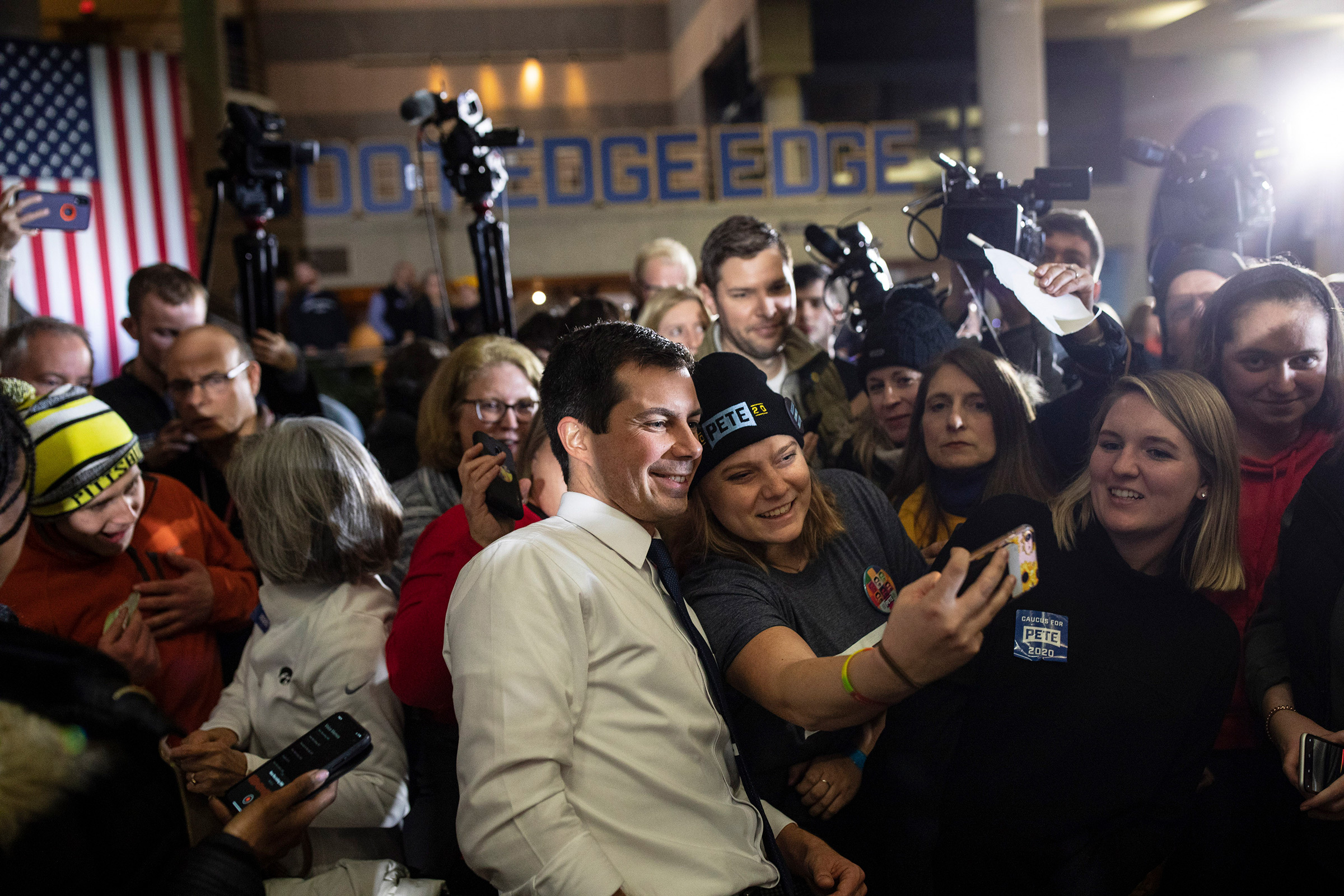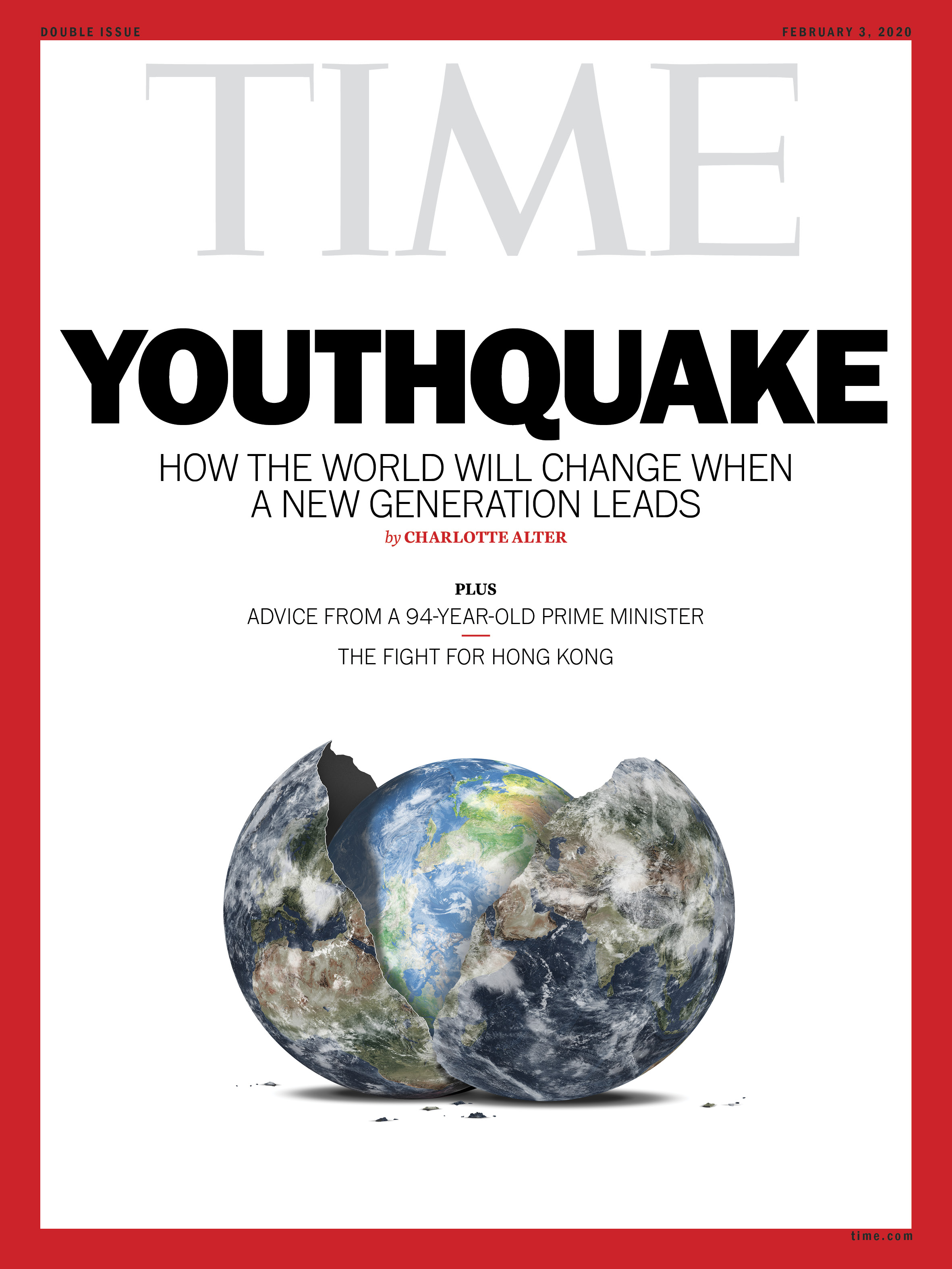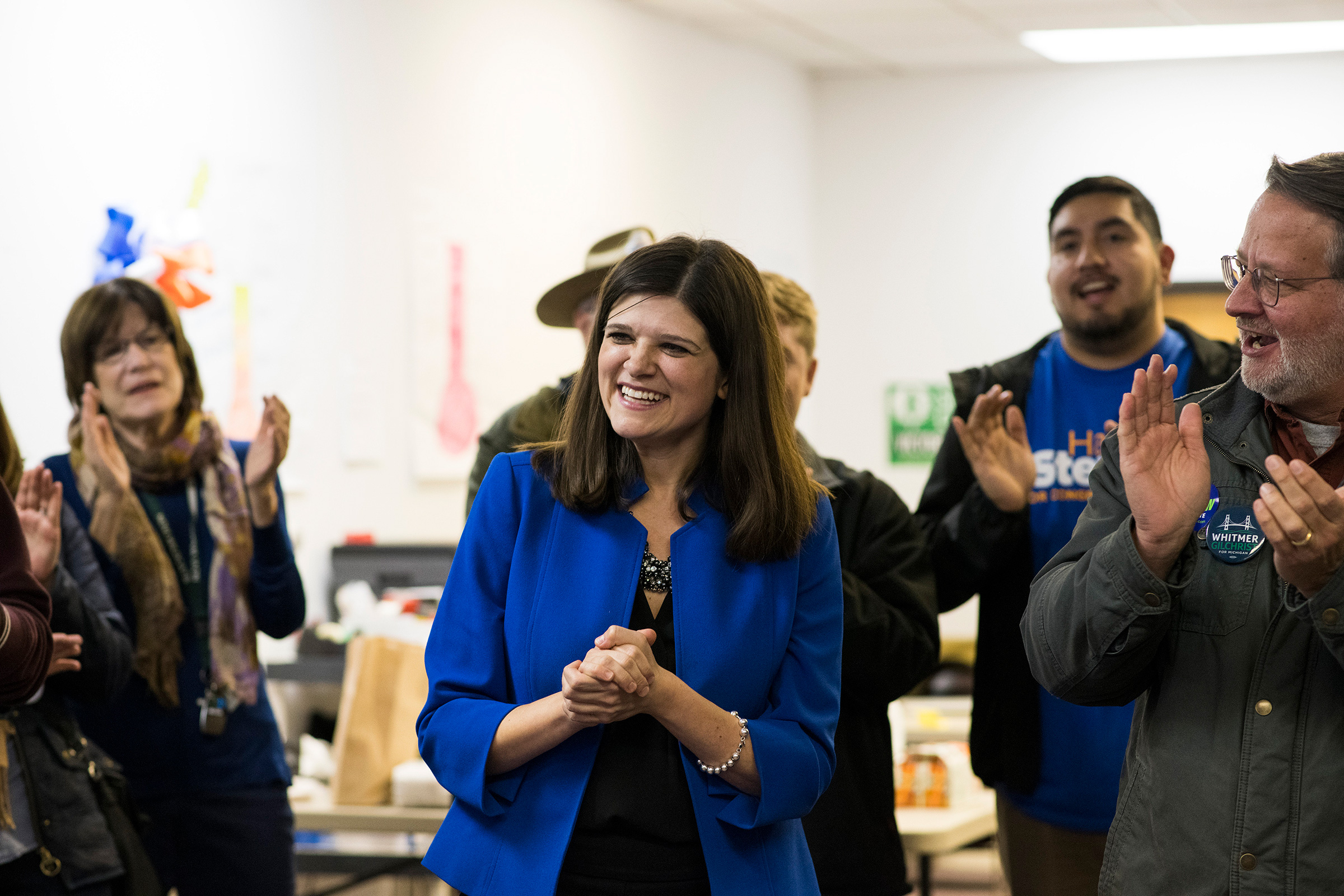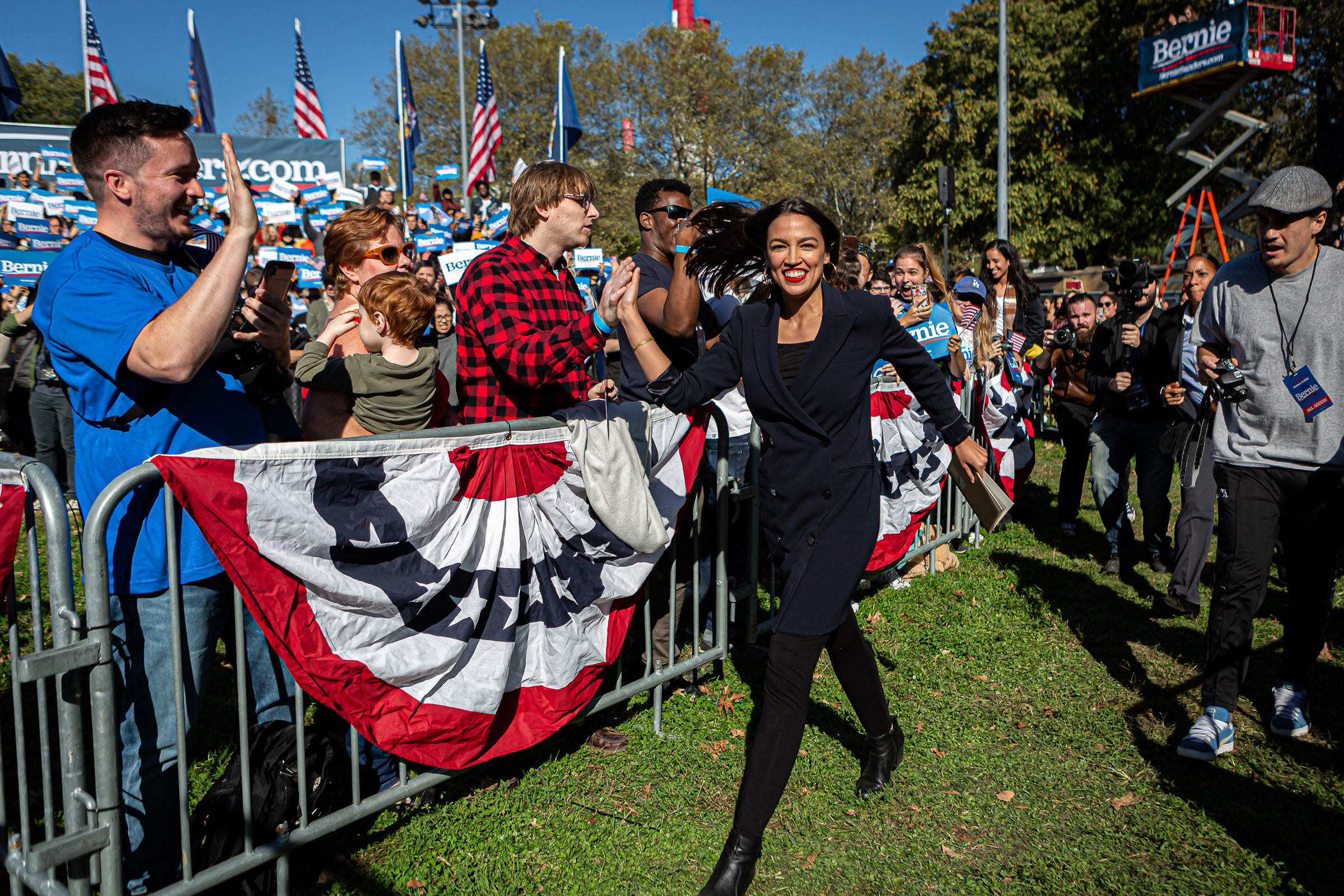
Love ’em or hate ’em, this much is true: one day soon, millennials will rule America.
This is neither wish nor warning but fact, rooted in the physics of time and the biology of human cells. Millennials–born between 1981 and 1996–are already the largest living generation and the largest age group in the workforce. They outnumber Gen X (born 1965–1980) and will soon outnumber baby boomers (born 1946–1964) among American voters. Their startups have revolutionized the economy, their tastes have shifted the culture, and their enormous appetite for social media has transformed human interaction. American politics is the next arena ripe for disruption.
When it occurs, it may feel like a revolution, in part because this generation has different political views than those in power now. Millennials are more racially diverse, more tuned in to the power of networks and systems and more socially progressive than either Gen X or baby boomers on nearly every available metric. They tend to favor government-run health care, student debt relief, marijuana legalization and criminal-justice reform, and they demand urgent government action on climate change. The millennial wave is coming: the only questions are when and how fast it will arrive.
So what’s America going to look like when this generation rises to power? I spent the past three years trying to answer that question by crisscrossing the country, interviewing the young leaders who are among the first in their cohort to be elected to public office. I sat down with Democratic stars like Representative Alexandria Ocasio-Cortez, 30, and former South Bend, Ind., mayor Pete Buttigieg, 38, and Republican up-and-comers like Representatives Elise Stefanik and Dan Crenshaw, both 35. I interviewed rookie Democratic Congresswomen like Lauren Underwood, 33, and Haley Stevens, 36, and a smattering of local leaders from California to New York, including Stockton, Calif., Mayor Michael Tubbs, 29, and Ithaca, N.Y., Mayor Svante Myrick, 32. The result is my book, The Ones We’ve Been Waiting For.
If I set out to learn what millennials believe and why, I ended up with something more compelling: a glimpse of our country’s future. Millennials, after all, are starting to gain political power at a time when America looks more like a gerontocracy than ever. Donald Trump is the oldest first-term President in U.S. history, elected largely by older, white voters. He is surrounded in Washington by senior citizens like Commerce Secretary Wilbur Ross, 82, who can manage only a small window every day when he can “focus and pay attention and not fall asleep,” according to one Politico report. Trump’s Senate allies are similarly geriatric. Senate majority leader Mitch McConnell, 77, graduated from the University of Louisville when tuition ran just $330 a year, and Republican Senator Chuck Grassley, 86, was kindergarten age before the chocolate-chip cookie was invented, in 1938.
It’s not just Republicans. Speaker of the House Nancy Pelosi, 79, and two of the top Democratic presidential candidates–former Vice President Joe Biden, 77, and Senator Bernie Sanders, 78–were born before the discovery of the polio vaccine and the bikini. Many of the lawmakers who must now grapple with questions of net neutrality, cyberwarfare and how to regulate Facebook were approaching retirement age when social media was invented.
Of course, age isn’t everything. Sanders, whose politics broadly reflect the preferences of the rising millennial electorate, has emerged as a Democratic front runner in part because of his popularity among young voters, while Buttigieg is most popular among older, more moderate Democrats. And Supreme Court Justice Ruth Bader Ginsburg, 86, has become a hero among young liberal women.
Nor will a generational uprising come all at once. Young people have historically voted at much lower rates than older people, and factors like geography, gerrymandering and voter-suppression efforts–which tend to disenfranchise college students and new voters–will conspire to diminish the power of millennials as the largest voting bloc. It may take years or even decades for millennials to be proportionally represented in the halls of power.
But a progressive youthquake is coming. Research has shown that people’s experiences in early adulthood have the greatest impact on their lifelong political leanings, and millennials, for the most part, have experienced an America riven by inequality, endless wars, a financial collapse, a student debt crisis, and inertia in the face of climate change. All that has made them distinctly more liberal than their elders. “The America we grew up in is nothing like the America our parents or our grandparents grew up in,” Ocasio-Cortez told me in an interview in her Capitol Hill office last year. “A lot of what we have to deal with are issues and decisions that were made by people in generations before us.”
According to Pew, 57% of millennials hold “consistently” or “mostly liberal” opinions, while only 12% report having conservative views. Even Buttigieg, who is often cast as a moderate in this Democratic presidential primary, is significantly more liberal than centrists of the previous generation, favoring universal health care, student debt relief and urgent action on climate change. He is also openly gay–which just a generation ago might have disqualified him from the South Bend mayor’s office, let alone the presidency. Meanwhile, Trump is deeply unpopular among young Americans. One Harvard poll found his disapproval rate among people under the age of 30 topped 70%.
There’s nothing more natural than generational turnover. Every couple of decades, a wave of elected officials begin to retire and a new generation fills the void. In the 1950s and ’60s, it was the Greatest Generation, the ones who fought WW II and led a civic revival that built the national highway system and the rockets that sent men to the moon. In the ’70s and ’80s, the so-called Watergate babies swept into office to clean up corruption and reform institutions, ushering in a new era of entrenched partisanship. And for the past 30 years, baby boomers have been running the show. They shaped American politics according to their principles of fierce individualism, embracing privatization, tax cuts and policies rooted in “personal responsibility.” Generation X’s leaders, including former Georgia house minority leader Stacey Abrams and Republican Senators Marco Rubio and Josh Hawley, are now ascendant.
Millennials are next. And by understanding the forces that shaped their politics, we can understand what America might look like when they’re in charge.

On Christmas Eve 1999, 16-year-old Haley Stevens opened her journal, gripped a purple marker and wrote: Haley’s Millennium Ideas. Her letters were large and looping. “The polar ice caps are going to melt,” she wrote. “Natural disasters and mad leaders at war … what we read and what we do became so unbalanced and money driven.” Like most diary-scribbling teenagers, she had a flair for the dramatic: “We won’t stop our mistakes,” she wrote. “So what the prophets predict will come true.”
Back then, Stevens was just a high school junior who filled her journal with America Online instant-message chats with boys from camp. (She printed them out and saved them for later analysis.) Now she’s a freshman Democratic Representative from Michigan’s 11th District, one of 20 millennials who were elected to Congress in 2018 in a wave of discontent with the Trump Administration.
I first met Stevens a couple of months before she won her primary. She had never held elected office, and at that point she was a long shot to win her party’s nomination, much less go on to flip her Michigan House district. Which is perhaps why she let a reporter into her mother’s bright yellow kitchen to read her childhood journals and sift through boxes of old keepsakes. “I think there’s a little bit of a misperception that people have about millennials: we do feel very called to service,” she told me at the time. “Kids of the ’90s, we grew up thinking that we were going to change the world.”
The conventional wisdom has long been that young people usually lean to the left and then become more conservative as they age, buy homes, build wealth and raise families. Winston Churchill once supposedly said, “If you’re not a liberal at 20, you have no heart; if you’re not a conservative at 40, you have no brain.” But the data tell a different story. Researchers have found that popular Presidents tend to attract young people to their party, while unpopular Presidents repel them. Those formative attitudes are persistent: if you’re disenchanted by a Republican President as a teenager, you’re disproportionately more likely to vote for Democrats well into your adult life. One Pew study of 2012 data found that those who turned 18 during the unpopular Republican Richard Nixon years were more likely to vote for Democrat Barack Obama, while those who turned 18 just a decade later, during the prosperous Ronald Reagan years, tended to vote for Obama’s GOP opponent in the 2012 presidential race, Mitt Romney.
In several studies, Andrew Gelman, a political scientist at Columbia University, and Yair Ghitza, chief scientist at Catalist, a data provider for Democratic and progressive organizations, found that political events experienced between the ages of 14 and 24 have roughly triple the impact of events experienced later in life. (Their research focused on white voters, since longitudinal data on voters of color is more difficult to find.) “It’s much more about cohort than age,” Gelman says. “One way of understanding these up and down trend lines over the decades is asking: What happened when people were young?”
Consider, then, the millennial generation’s experience of America so far. For many, their political awakening came on Sept. 11, 2001. Ocasio-Cortez, then a seventh-grader, remembers coming home early from school and watching the towers fall on television, wondering whether her mom would be home from work in time for the apocalypse. Representative Max Rose, then a high school freshman, surprised his parents after the tragedy by hanging an American flag in his messy teenage bedroom in New York City. Stefanik, who was a high school senior in Albany, N.Y., remembers watching a friend collapse on the floor because her sister worked in one of the towers. (The friend’s sister was ultimately found safe.) “It’s one of the reasons I wanted to go into public policy,” Stefanik told me later. “On that day, we became a globally aware generation.”

The millennials who enlisted to fight in the endless wars that followed would learn firsthand the consequences of American foreign policy. Crenshaw, who was also in high school on 9/11, lost his eye in Afghanistan while serving as a Navy SEAL, completing a mission he thought was a misguided use of resources by Obama’s Pentagon. Rose was injured by an improvised explosive device in Afghanistan; his life was saved by a new kind of Stryker vehicle that has been recently funded by Congress. When Buttigieg arrived in Afghanistan as a naval intelligence officer in 2014, his fellow officers told him the war was over: he spent most of his nights in his bunk, reading Tolstoy’s War and Peace and thinking about the question Vietnam veteran John Kerry once asked during congressional testimony: “How do you ask a man to be the last man to die for a mistake?”
The young people who served in Iraq and Afghanistan often have a more comprehensive view of American military engagement than their peers. Crenshaw is a vocal supporter of American military abroad and bucked his party to oppose Trump’s proposed withdrawal of troops from Syria. He often says, “We go there, so they don’t come here.” But while the baby boomers endured the Vietnam draft, only a small fraction of millennials have served in the military, and many see the wars as folly at best, immoral at worst. To many of them, the wars in Iraq and Afghanistan were expensive fiascoes that shattered their sense of American exceptionalism.
In 2017, just half of millennials said they thought the U.S. should take an active part in world affairs, compared with almost three-quarters of boomers. Only about a third of millennials said they thought the U.S. was the greatest country in the world.
Meanwhile, young people weren’t doing great at home either. Thanks to a series of public-policy moves, including slashing federal funding for state colleges and institutionalizing debt as a means to pay for it, millennials ended up owing nearly four times as much in student loans as their parents did. The student debt burden in the U.S. now stands at $1.6 trillion, most of which is owed by younger generations.
Then came the financial crisis in 2008, which has had cascading effects for millennials and shaped many of their young political leaders. Ocasio-Cortez’s father died just as the economy was melting down, and as her mother fought in court to recoup her husband’s assets, Ocasio-Cortez’s younger brother Gabriel noticed bank officials prowling around taking photos of their home. He had read that having a dog on the property can slow down the foreclosure process, since the bank would have to compensate its managers with hazard pay. He started leaving the family’s Great Dane, Domino, on the porch.
Between student debt and the financial crisis, millennials are lagging behind boomers and Gen X-ers. One study found that nearly a decade after the recession, millennialled households still had 34% less wealth than older generations had at their age, and the recession prevented millennials from substantially increasing their net worth. Youth unemployment spiked to 20% after the recession, and when millennials did find jobs, they were often in the gig economy, which likely meant irregular hours and no benefits. Between 1989 and 2011, the percentage of graduates covered by employer-sponsored health insurance was halved. Millennials, as a group, are more likely to have debt, less likely to have union benefits, and less likely to own a house or a car compared with the generations before them. Those who have gotten married have done so later and had fewer children. No wonder, then, that many young people today feel that 20th century systems aren’t working. They want to build 21st century solutions for 21st century problems.

The 2008 presidential race was a galvanizing political moment for many young people. Buttigieg, who was 26 at the time, trudged through Iowa canvassing for Obama, digging out his car with his clipboard when it got stuck in the snow. Eric Lesser, who is now a Massachusetts state senator, worked as a luggage handler for Obama’s campaign. Obama’s victory was due in large part to youth enthusiasm: he won two-thirds of voters under 30.
Obama rose to power on a message of consensus building, and many of the young people who worked for him internalized that message. Stevens, who also worked for Hillary Clinton in the primary and for Biden’s vice-presidential bid in 2008, was hired to work on the new President’s auto task force. She remembers staying up all night in the Treasury Department, eating Cheerios straight out of the box as the task force tried to find a way to save the auto industry. Lauren Underwood, now a first-term Illinois Congresswoman, worked in Obama’s Department of Health and Human Services, helping implement the Affordable Care Act. “We have very high goals, just like Obama did,” says Lesser, who spent much of Obama’s first term sitting in a tiny cubby outside the Oval Office, working as a special assistant to senior adviser David Axelrod. “But we also understood that sometimes it’s the singles and doubles and triples that get you there.”
Other young people were galvanized in a different way by Obama’s focus on consensus. “A lot of our generation put our hopes into Barack Obama’s campaign,” says Waleed Shahid of Justice Democrats, a progressive organization that supports young, working-class candidates like Ocasio-Cortez in campaigns against moderate Democrats. “And then as soon as he gets into office, there’s all these things that go on that are kind of disappointing to young people.” If this was the best a transformative leader like Obama could do within the system, many people figured, then maybe the system itself was broken.
If systems were the problem, then movements–not individuals–would be the solution. In the wake of the Obama Administration, millennials began founding and joining “leaderless” social movements like Occupy Wall Street and Black Lives Matter, demanding systemic overhauls to fix structural inequality and institutional racism. These groups rejected Obama’s hopeful pragmatism. “We’ve never seen bipartisanship function in society,” says Varshini Prakash, a leader of the Sunrise Movement, a group of young people agitating for a Green New Deal. “We’ve fundamentally seen our political institutions fail to fix the most existential threats of our lifetime.”
So when Sanders ran for President in 2016 on a message that the system itself was rigged, his message struck a chord. Working as a bartender in New York, Ocasio-Cortez sometimes made as little as $60 in tips in a nine-hour day. “I didn’t have health care, I wasn’t being paid a living wage, and I didn’t think that I deserved any of those things,” she told a cheering crowd of Sanders supporters in late 2019, after endorsing his presidential run. “It wasn’t until I heard of a man by the name of Bernie Sanders that I began to question and assert and recognize my inherent value as a human being.”
Among young voters, Sanders’ embrace of democratic socialism was not a liability; it was part of his appeal. Young people’s approval of capitalism dropped 15 points from 2010 to 2019, according to Gallup. By 2018, fewer than half of 18-to-29-year-olds said they supported capitalism, according to an annual poll from Harvard’s Institute of Politics; 39% said they supported democratic socialism. The word itself–socialism–became something of a generational Rorschach test: to boomers, it conjured images of Soviet gulags and Venezuelan famine; to millennials, it meant universal health care and day care, climate solutions and affordable housing.
None of this looks good for the GOP. Republicans have long done well among white voters, but millennials and their younger siblings in Gen Z (those born since 1997) are the most racially diverse generation in U.S. history. Republicans maintain strong ties to religious voters; millennials widely reject organized religion and are more openly LGBTQ than any generation before. On nearly every predictor of social conservatism–religion, race, wealth–millennials are headed one way and the GOP is headed another.
In the years before 2016, young Republicans urged their party to do a better job of appealing to millennials. Former GOP Representative Carlos Curbelo of Florida, first elected at age 34, pushed his party to embrace immigration reform and described a widespread acceptance of marriage equality among younger conservatives. “This is a live-and-let-live generation,” he says. “We don’t seek to impose our moral codes on others.” Stefanik and Curbelo both pushed their party to act on climate change, an issue that many of their septuagenarian colleagues have either dismissed or ignored. (Stefanik, who first emerged as a voice of moderation in the GOP, has now taken a hard right turn, defending Trump against impeachment and signing on as a New York co-chair in his re-election campaign.)
But Trump’s election in 2016 scrambled young Republicans’ efforts to appeal to a new generation. When Curbelo, once a rising star in the GOP, was ousted in the 2018 midterms, Trump mocked him as Carlos “Que-bella.” As Trumpism rose, many young conservatives began nursing serious doubts about their party, and some jumped ship altogether. From 2015 to 2017, roughly half of young Republicans defected from the GOP, according to Pew. Over 20% came back to the party by 2017, but almost a quarter left for good, Pew found. By 2018, only 17% of millennials identified as solidly Republican.
Conservatives may find solace in the fact that young people are still much less likely to vote than their parents or grandparents. But that may be changing too. Millennial turnout was 42% in the 2018 midterms, roughly double what it was four years prior, and they voted for Democrats by roughly 2 to 1. That turnout helped send 20 millennials to Congress, from firebrand socialists like Ocasio-Cortez in New York City to moderate seat flippers like Representative Abby Finkenauer in Iowa. And nearly 60% of Americans under 30 say they definitely plan to vote in 2020.

These generational rifts have already defined the Democratic primary in surprising ways. Buttigieg has frequently noted that he is a member of the “school-shooting generation,” and emphasized that millennials like him will be on “the business end” of climate change. When I first met Buttigieg at a coffee shop in Manhattan in 2017, he told me he thought a lot about the 2004 commencement speech that the comedian Jon Stewart gave at William & Mary. “He said, ‘Here’s the thing about the real world: We broke it, sorry’–I think he meant grownups,” Buttigieg told me, paraphrasing the speech. “He said, ‘We broke it, but the thing is, if you figure out how to fix it, you get to be the next Greatest Generation.'”
Today Buttigieg is part of a quartet of top contenders in the 2020 Democratic primary. If he wins, he’ll be the first millennial presidential nominee. And if the nomination goes instead to Sanders or Elizabeth Warren, both in their 70s, it will be because millennial voters have dragged the party to the left. Nearly 6 in 10 young Democrats favor the most progressive candidates: according to a January Quinnipiac poll, 39% of voters under 35 favor Sanders and 18% support Warren.
Which means that if 2016 was a skirmish, then 2020 could be an all-out generational war. It may take two years, or five years, or 10, but the boomers who run Washington today won’t be around forever. A surge is coming. The elections this year could tell us if it’s already here.
Adapted from Alter’s book, The Ones We’ve Been Waiting For, out Feb. 18
More Must-Reads from TIME
- Introducing the 2024 TIME100 Next
- The Reinvention of J.D. Vance
- How to Survive Election Season Without Losing Your Mind
- Welcome to the Golden Age of Scams
- Did the Pandemic Break Our Brains?
- The Many Lives of Jack Antonoff
- 33 True Crime Documentaries That Shaped the Genre
- Why Gut Health Issues Are More Common in Women
Write to Charlotte Alter at charlotte.alter@time.com